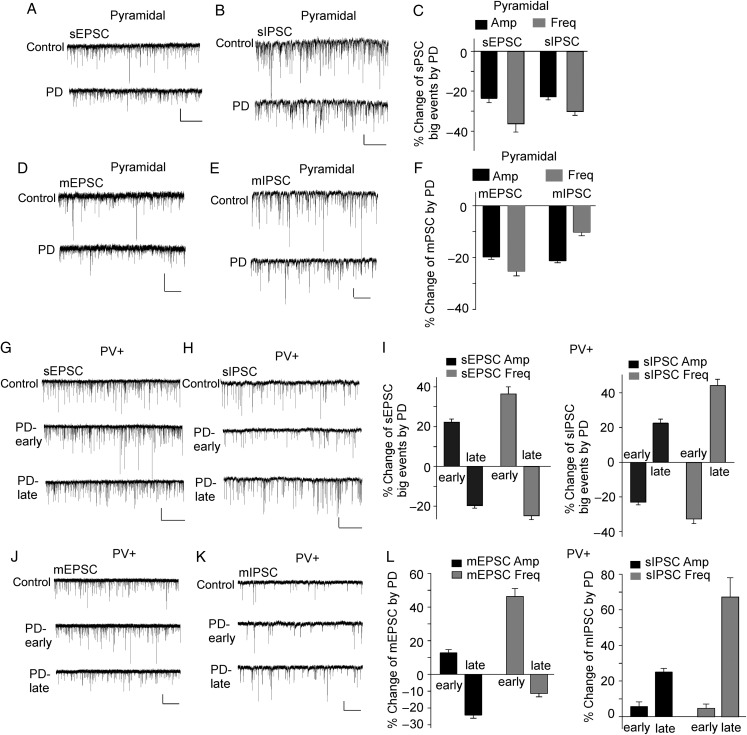Figure 5.
D4R agonist PD168077 induced different effects on excitatory and inhibitory synaptic transmission in PFC pyramidal neurons and PV+ interneurons. (A–E) Representative traces of sEPSC (A), sIPSC (B), mEPSC (D), and mIPSC (E) before and after PD168077 (40 μm, 10 min) treatment in PFC pyramidal neurons. Scale bars: 20 pA, 5 s (A,B), 2 s (D,E). (C,F) Bar graph summary of the percentage change in the spontaneous (C) and miniature (F) synaptic currents by PD168077 in pyramidal neurons. (G,H,J,K) Representative traces of sEPSC (G), sIPSC (H), mEPSC (J), and mIPSC (K) before and after PD168077 (40 μm, 10 min) treatment in PV+ interneurons. Note, 2 time points (early: 3rd–5th min during PD application; late: 7th–10th min during PD application) were selected to show the biphasic effects of PD168077. Scale bars: 20 pA, 5 s (G,H), 2 s (J,K). (I,L) Bar graph summary of the percentage change in the spontaneous (I) and miniature (L) synaptic currents by PD168077 at 2 time points (early and late) in PV+ interneurons.

